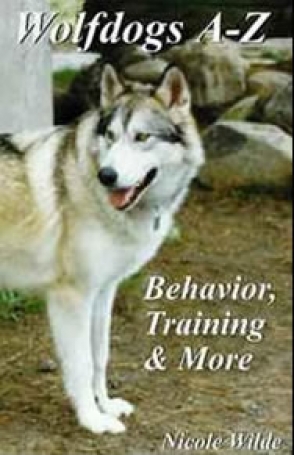Advice, answers, tricks and tips for anyone who shares or is considering sharing their life with these special companions. Packed with photographs.
It's Magic! Or is it?
As a dog trainer and canine behavior specialist, I am well aware of how much work it takes to train a dog to reliability on certain behaviors, and the amount of time and effort involved in modifying serious behavior problems. The average dog owner, understandably, is not. It’s easy to see how pet owners could easily be dazzled by a well-crafted television show or in-person demonstration of training prowess without realizing all that goes into that seemingly effortless display.
No, this isn’t about slamming any particular television show or trainer. What it is about is the reality of what it takes to have a successfully trained, well-behaved dog. The production of any television show, regardless of topic, entails many hours of filming, painstaking re-shoots, and careful editing to create the final broadcast-ready episode. On a dog training show, viewers never see the prep work trainers do with the dog, or the scenes that have been deleted either because something just didn’t work with the dog or with the production itself. And some parts of the training process are never filmed to begin with; viewing lengthy behavior modification processes that take time, such as desensitization and counterconditioning, would be about as exhilarating to most people as watching paint dry. Sure, the methods work, and they’re based on sound, humane principles—they’re just not very exciting.
What viewers end up seeing is a glossy, produced version of the trainer’s efforts with the dog. Sure, there are setbacks that make it to the screen; we need some drama, after all. But for the most part, improvement seems to occur with amazing ease. Is that a bad thing? Not necessarily; it’s interesting, and it shows us what can be accomplished. And to be fair, some problems can be fixed within the confines of a thirty- or sixty-minute time frame. The unfortunate part is that many viewers see the process as instantaneous and nearly magical. The obvious extrapolation is that their own dogs can be trained out of long-standing, serious behavior issues such as aggression in a very brief period of time, and that those results will be long-lasting without any further effort on their parts.
As far as basic obedience skills, clients whose dogs I train are often amazed at how quickly I can get their fur-kids to sit, lie down, or master a simple behavior such as “leave it.” Am I some sort of genius? A canine wizard, perhaps? Nope. The truth is, any trainer worth their salt ought to be able to get those particular behaviors fairly quickly. What looks like magic to the owner is simply the cumulative result of years of experience, careful honing of skills, and the ability to communicate clearly with dogs.
Unfortunately, there are a lot of egos in the dog training world. It would be easy enough for a trainer with good skills to represent him- or herself as some sort of doggy magician with special powers. While that might be tempting, it’s not really helpful to clients. It’s not about the trainer getting the dog to behave, but about teaching the owner how to get the dog to behave. After all, owners are the ones the dogs ultimately need to listen to.
At the end of the day, reality is not about dazzling, instant results. Sure, a good trainer can make it look fantastically easy, but the real magic lies in educating the public about the realities of canine behavior and training, and being able to teach owners to create magic with their own dogs.










